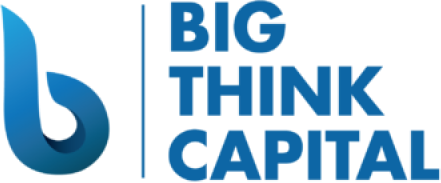Navigating Inflation and Interest Rate Hikes: How Small Business Owners can Leverage Working Capital Advances and Business Lines of Credit
Estimated Reading Time: 6 minutes
- Understand how inflation and interest rate trends impact small businesses
- Explore the advantages of working capital advances and business lines of credit
- Learn practical insights for managing financial challenges in today’s economy
Table of Contents
- Understanding Inflation and Interest Rate Trends
- How Working Capital Advances Can Help
- Benefits of a Business Line of Credit
- Practical Insights for Navigating Financial Challenges
- The Role of Big Think Capital
- Conclusion
- FAQ
Understanding Inflation and Interest Rate Trends
According to the Federal Reserve, inflation is expected to stabilize around 3.5% to 4.0% by the end of 2025, a drop from previous years but still above the ideal target rate of 2% (source: Federal Reserve Economic Data). This lingering inflationary pressure can lead to increased operational costs for small businesses, from the price of raw materials to salary adjustments to retain talent.
Simultaneously, the Federal Reserve has implemented a series of interest rate hikes over the past two years to combat inflation and stabilize the economy. As of January 2025, the federal funds rate stands at 4.25%, affecting borrowing costs for businesses and consumers alike. This scenario creates a tight credit environment where prudent financial planning is essential.
How Working Capital Advances Can Help
Working capital advances are a popular financing option for small businesses looking to bridge the gap between cash inflows and outflows. Given the current economic environment, here are some critical aspects business owners should consider:
- Immediate Access to Cash: Working capital advances enable small businesses to receive a lump sum of cash quickly. This immediacy can be crucial for businesses facing short-term cash flow issues, allowing them to cover operational costs without delay.
- Flexible Repayment Structure: Unlike traditional loans that typically require fixed monthly payments, working capital advances often link repayments to daily credit card sales or overall revenue. This flexibility can help businesses manage their cash flow better, especially during slower sales periods when higher repayment amounts might strain finances.
- Less Stringent Qualification Criteria: For small business owners concerned about qualifying for traditional loans, working capital advances generally have more relaxed requirements. This feature makes them accessible to a broader range of businesses, including those with less-than-perfect credit scores.
- The Role of Business Cash Flow: Before applying for a working capital advance, it is essential for business owners to evaluate their cash flow. A thorough understanding of revenue patterns will help determine how much funding is necessary and manageable.
Benefits of a Business Line of Credit
A business line of credit is another flexible funding option for small businesses, particularly when dealing with fluctuating expenses. Key benefits include:
- On-Demand Access to Funds: A business line of credit allows owners to borrow funds as needed up to a predetermined limit. This feature means that businesses only pay interest on the amount drawn, rather than the full amount of the credit line.
- Flexibility for Unexpected Expenses: Whether dealing with seasonal spikes in demand or unexpected repairs, a line of credit provides a financial safety net. Businesses can quickly access funds for immediate needs without the lengthy application process often associated with loans.
- Building Business Credit: Utilizing a business line of credit responsibly can contribute to building and improving a business’s credit profile. Timely payments can enhance credit scores, making future borrowing easier and potentially leading to better loan terms.
- Planning for Inflationary Pressures: With inflation impacting both costs and pricing strategies, having a line of credit enables business owners to navigate these pockets of pressure effectively. They can purchase inventory or service contracts without incurring exorbitant costs upfront.
Practical Insights for Navigating Financial Challenges
As small business owners face economic uncertainty due to inflation and rising interest rates, here are three takeaways to consider:
- Prioritize Cash Flow Management: Carefully track and manage your cash flow to identify trends and potential shortfalls before they impact operations. Tools and software are available to streamline financial management, making it easier to monitor inflows and outflows regularly.
- Explore Multiple Funding Options: Don’t limit your financing strategy to traditional bank loans. Investigating different types of funding, such as working capital advances and lines of credit, can provide flexibility and immediate access to necessary capital. Consider forging relationships with lenders who specialize in small business financing for tailored solutions.
- Be Proactive with Financial Planning: In today’s economic landscape, uncertainty is inevitable. Forecasting revenue and expenses can provide clarity about future financing needs. Create a financial strategy that includes contingencies to address potential challenges posed by inflation and rising interest rates.
The Role of Big Think Capital
At Big Think Capital, we understand the unique challenges posed by inflation and interest rate fluctuations for small business owners. Our team specializes in helping businesses navigate funding options that suit their specific needs. Whether you are considering a working capital advance or a business line of credit, we are here to guide you through the financing landscape.
Conclusion
Rising inflation and interest rates may create hurdles for small business owners in 2025, but strategic financing solutions can provide the necessary support to maintain and grow your business during challenging times. Both working capital advances and business lines of credit offer flexibility and quick access to cash, allowing you to tackle operational expenses and seize growth opportunities.
To learn more about how Big Think Capital can assist you in navigating these financial challenges, visit us at bigthinkcapital.com or speak with one of our funding experts today. We are committed to helping you find the right financing solutions for your business’s unique needs.
FAQ
- What are working capital advances? Working capital advances are lump sum cash loans provided to businesses, typically based on credit card sales or revenue.
- How does a business line of credit work? A business line of credit allows you to borrow funds as needed up to a limit, with interest only charged on the drawn amount.
- What should I consider before applying for financing? Evaluate your cash flow and understand your funding needs based on revenue patterns to ensure manageable repayments.






